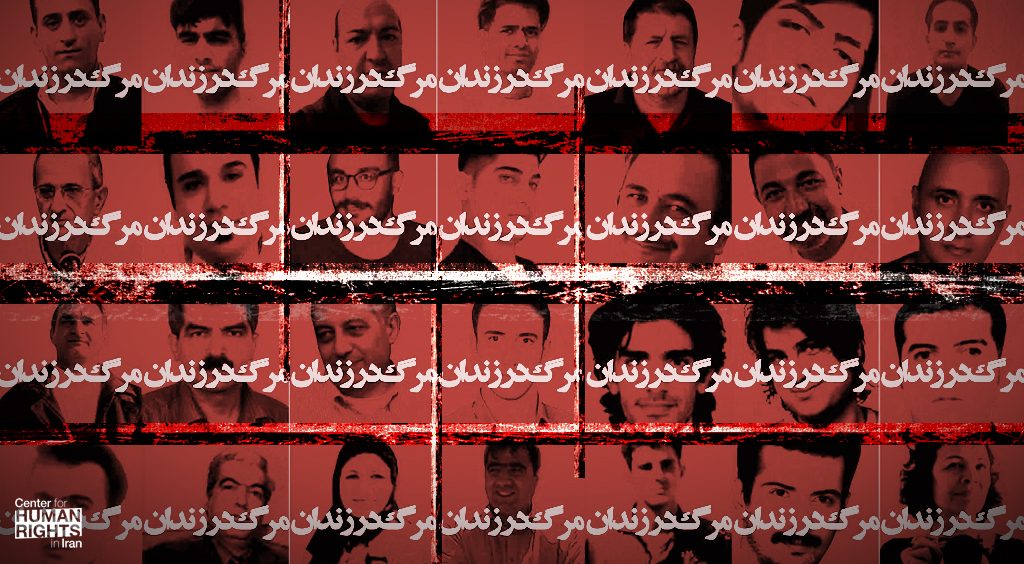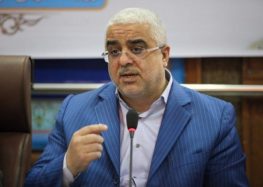Lack of Accountability Perpetuates Deaths of Prisoners in Iran
 The torture and inhuman mistreatment of detainees and prisoners in Iran are among the most serious violations of human rights in the country’s prisons.
The torture and inhuman mistreatment of detainees and prisoners in Iran are among the most serious violations of human rights in the country’s prisons.
In many cases, prisoners or detainees have died from injuries inflicted upon them in custody and yet the government has never acknowledged responsibility on a systemic level, allowing the perpetrators to go unpunished.
The torture and mistreatment of prisoners and detainees, long a grim feature of the Islamic Republic of Iran’s security establishment and judicial system, have attracted greater attention with the emergence of social media.
In particular, abuse in jails in remote parts of the country would never have been exposed without the internet.
In some cases, deaths were caused by inhumane living conditions and were exacerbated by the lack of medical care.
Iranian authorities have failed to provide accountability for at least 72 deaths in custody since January 2010, despite credible reports that they resulted from torture or other ill-treatment or the lethal use of firearms and tear gas by officials, according to a report by Amnesty International.
Amnesty noted that the real number of deaths in custody is likely much higher given the lack of transparency in Iran’s justice system and the fact that many human rights violations go unreported due to widespread fear of reprisal and systematic repression of civil society.
Dozens of political prisoners are among those who’ve perished in Iranian prisons.
In February 2021, Behnam Mahjoubi, a Sufi dervish imprisoned in Tehran’s Evin Prison, died from serious neurological issues after the State Medical Examiner concluded he could not withstand incarceration and recommended his release.
Political prisoner Sassan Niknafs lost his life in the Greater Tehran Central Penitentiary in June 2021 after the authorities ignored his multiple physical and mental health problems.
One of the most brutal and tragic examples of abuse of detainees was the death of dissident blogger Sattar Beheshti from internal bleeding, hemorrhaging in his lungs, liver, kidneys, and brain which followed the torture he endured while in police detention in November 2012.
Except for prosecuting a few low-ranking agents and officials, the Iranian judiciary, which is ultimately responsible for prisoners’ safety, has never confronted the systematic abuse in Iran’s prisons and detention facilities.
In its September 15 report, Amnesty International listed the cases of 72 men and women who have died in custody in Iran since January 2010.
The deaths occurred at 42 prisons and detention centers in 16 provinces, including Alborz, East Azerbaijan, Golestan, Ilam, Kermanshah, Khorasan Razavi, Khuzestan, Kurdistan, Lorestan, Markazi, Mazandaran, Sistan and Baluchistan, South Khorasan, Tehran, West Azerbaijan, and Yazd.
 In addition, revealing images leaked from Evin Prison’s security cameras in August 2021 have further exposed abuse and violations against prisoners.
In addition, revealing images leaked from Evin Prison’s security cameras in August 2021 have further exposed abuse and violations against prisoners.
The authorities have rarely taken responsibility and have often excused the deaths by blaming the victims themselves or claiming they were accidental without allowing independent investigations.
Dual nationals are among those who’ve perished in Iranian prisons with no means of recourse provided to their families.
In July 2003, Iranian Canadian photojournalist Zahra Kazemi died in custody after being arrested in front of Tehran’s Evin Prison. Former Tehran Prosecutor Saeed Mortazavi was implicated in her death in an Iranian parliamentary investigation but never held accountable.
Then in February 2018 Iranian-Canadian academic and wildlife conservationist Kavous Seyed-Emamidied under suspicious circumstances in Evin Prison days after his arrest along with several other colleagues. The authorities claimed he had committed suicide but a preliminary State Medical Examiner’s report showed evidence of an injection on his skin as well as bruises on his body.
The family was denied an independent autopsy and no one was ever held responsible for Seyed-Emami’s death.
The most recent case occurred on September 9, 2021, when the Intelligence Ministry informed the family of Yasser Mankoury that their son had died without providing an explanation.
Mankoury had been arrested a few months earlier on July 17 near the town of Piranshahr in the largely Kurdish-populated region of northwestern Iran in connection with an alleged armed confrontation with Islamic Revolutionary Guards Corps agents.
“He might have been killed with a bullet that same night [when he was arrested] but the authorities were not giving any information about his condition or where he was being held despite many inquiries by his relatives,” a source close to the family told the Human Rights Activists News Agency (HRANA) on September 13.
“They were only told they would be contacted and finally they called last Thursday [September 9] and informed them of his death,” said the source.
Deaths of prisoners are ongoing in Iran despite laws and regulations that were designed to prevent them.
Article 38 of the Constitution explicitly bans “all forms of torture” and Article 39 states: “All affronts to the dignity and repute of persons arrested, detained, imprisoned, or banished in accordance with the law, whatever form they may take, are forbidden and liable to punishment.”
Article 295 of the Islamic Penal Code states very clearly that “If a person abandons a task or particular duty assigned by law… and as a result, a crime gets committed, that crime will be attributed to him as an intentional or semi-intentional act or a total error, depending on each case.”
In some cases officials can be tried for murder, yet no one ever has.
According to Article 290 of the Islamic Penal Code, “it would be considered intentional murder if a person deliberately commits an act that leads to a crime that was unintentional but committed with the knowledge that the action could result in a crime,” commented human rights attorney Saeid Dehghan following news of Niknafs’ death.
Official responses to cases reported by the media or on social media have been dismissive.
Following the anonymous release of security camera footage from Evin Prison on social media, the prison’s director, Mohammad Mehdi Haj Mohammadi, did not step down for his responsibility as the authority in charge and instead promised to “deal firmly with the transgressors.”
So far, no charges have been issued.
Read this article in Persian

